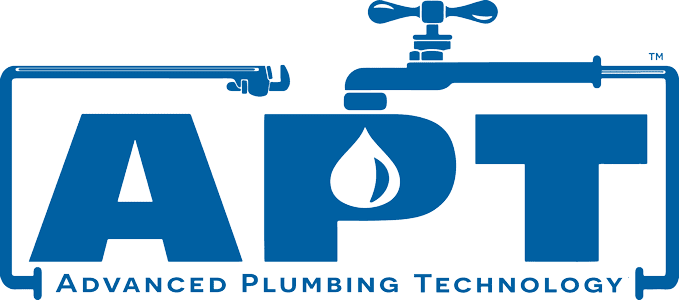The Water Heater Guide: Types, Installation, and Maintenance Tips
September 19th, 2023Posted by Brian Shoemaker
Welcome to Advanced Plumbing Technology’s comprehensive guide on water heaters. If you’re searching for reliable information about different types of water heaters, their installation processes, and essential maintenance tips, you’ve come to the right place. As industry experts, we’re committed to providing you with in-depth insights that will help you make informed decisions and empower you to maintain your water heater for optimal performance and longevity.
Understanding the Types of Water Heaters
When it comes to water heaters, there is more than one-size-fits-all solution. Depending on your needs and preferences, you can choose from various types of water heaters:
1. Conventional Storage Water Heaters
Conventional storage water heaters are the most common type. They store and heat water in a tank, making hot water readily available whenever you need it. These heaters come in different sizes, catering to varying household demands. However, they consume energy to keep the water heated even when not used.
2. Tankless Water Heaters
Tankless water heaters, also known as on-demand water heaters, are gaining popularity due to their energy efficiency. Unlike conventional heaters, they heat water only when you turn on the faucet, eliminating the need for a storage tank. This can lead to significant energy savings over time.
3. Heat Pump Water Heaters
Heat pump water heaters utilize electricity to move heat from the air or ground to heat the water. While they are more energy-efficient than conventional heaters, they work best in warm climates.
4. Solar-Powered Water Heaters
Solar-powered water heaters harness energy from the sun to heat your water. They are environmentally friendly and can save energy, especially in sunny regions.
5. Condensing Water Heaters
Condensing water heaters are designed to maximize efficiency by capturing and utilizing hot gases that would otherwise be wasted in conventional heaters. They are a great option if energy efficiency is a top priority.
Installation Process: Ensuring Proper Setup
Proper water heater installation is crucial to its performance, efficiency, and safety. Here’s what you need to consider during the installation process:
1. Choose the Right Location
You can select a suitable location for your water heater. It should be well-ventilated, easily accessible for maintenance, and away from flammable materials.
2. Follow Manufacturer Guidelines
Carefully read the manufacturer’s installation instructions. Each type of water heater may have specific requirements that must be followed to ensure safe and efficient operation.
3. Proper Ventilation
For gas-powered water heaters, please make sure to use proper ventilation to prevent the buildup of dangerous gases. Improper ventilation can pose serious health risks.
4. Professional Installation
Unless you’re experienced in plumbing and gas systems, it’s recommended to hire a professional technician for the installation. This ensures compliance with safety standards and prevents potential hazards.
5. Insulation
Consider insulating the hot water pipes and the storage tank itself. This helps reduce heat loss and improves overall energy efficiency.
Maintaining Your Water Heater: Tips for Longevity
Proper maintenance is the key to extending the lifespan of your water heater and maintaining its efficiency. Here are some essential maintenance tips:
1. Regular Flushing
Over time, sediment buildup can occur in the bottom of the tank, affecting efficiency. Periodically flushing the tank helps remove these sediments and keeps the water heater functioning optimally.
2. Check the Pressure Relief Valve
The pressure relief valve prevents excessive pressure from building up within the tank. Test this valve at least once a year to ensure it’s working correctly.
3. Inspect for Leaks
Regularly inspect your water heater for any signs of leaks, corrosion, or rust. Addressing these issues early can prevent more significant problems down the line.
4. Adjust Temperature Settings
Consider adjusting the temperature settings on your water heater to a comfortable yet energy-efficient level. Lowering the temperature can save energy and reduce the risk of scalding.
5. Professional Inspections
Schedule annual professional inspections to identify and address any potential problems. A trained technician can detect issues that may not be immediately apparent to the untrained eye.
Conclusion: Making Informed Choices for Your Water Heater
In conclusion, selecting the right water heater, ensuring proper installation, and adhering to a regular maintenance routine are essential steps in maximizing your water heater’s performance and lifespan. Advanced Plumbing Technology is committed to assisting you in every aspect of your water heater journey. With our comprehensive guide, you now have the knowledge to make informed decisions that align with your needs, preferences, and energy-saving goals.
Remember, your water heater is a long-term investment in your comfort and convenience. By choosing the right type, following proper installation procedures, and prioritizing maintenance, you can enjoy a consistent supply of hot water while minimizing energy consumption and potential repair costs. If you have any questions or require professional assistance, don’t hesitate to reach out to our team of experts at Advanced Plumbing Technology. We’re here to ensure your water heater operates flawlessly for years to come.
